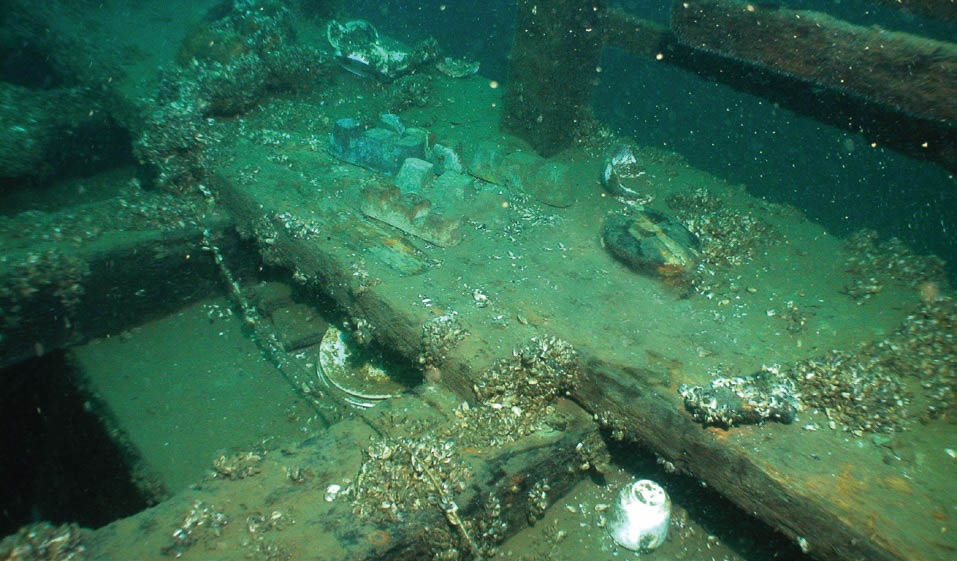Package freighter SS Pewabic operated between ports on the Upper Great Lakes. Launched in October 1863, she was outfitted in the spring of 1864 and remained in active service until August 9, 1865, when she sank off Thunder Bay Island in Lake Huron as a result of colliding with her sister ship. There was a severe loss of life, with estimates of the number of passengers and crew that perished with the ship varying from 100 to 125. In terms of fatalities resulting from a single vessel sinking, assuming the higher figure is accepted, this disaster ranks eighth in Great Lakes history and tops all Lake Huron disasters in terms of fatalities. One aspect of the current Thunder Bay National Marine Sanctuary is the package freighter’s buried hull.
The Cleveland yard Peck & Masters built the Pewabic for the Lake Superior Transit Company. She measured 200 feet (61 meters) in length and 31 feet (9.4 meters) in beam. Lake Superior Transit, formerly known as the Pioneer Line, specialized in the quick transport of people and goods between Lake Erie and Lake Superior, particularly in the Copper Country, which is concentrated on the Keweenaw Peninsula in far northern Michigan. The Civil War-era commodity boom had produced ready buyers for ingot copper from the Upper Peninsula’s growing mines. The Pewabic, deemed “one of the finest vessels on the lakes,” operated in tandem with a sister ship, the SS Meteor, and the Pioneer Line was extremely successful in transporting passengers in both directions. Both boats travelled across freshwater at a then-record breaking 12 knots. Their trajectories usually intersected in northern Lake Huron, where one vessel was always travelling north and the other south.
The captains of the two ships formed the habit of racing alongside one another as a result of the frequent celebrations and humorous salutes that marked their meetings. According to a commonly told tale, a mail sack containing Civil War newspapers that might be sold to passengers in need of news would normally be heaved onto the deck of the southbound ship by a seaman aboard the northbound vessel. Regardless, the meeting on August 9, 1865 ended tragically, with the Meteor’s prow (the portion of a ship’s bow above water) wedged deep into the foreparting of her damaged sister ship. After the impact, the fatally injured Pewabic sank in no more than 30 to 45 minutes.
Six miles off Thunder Bay Island, close to Alpena, was where the collision occurred. Some of the passengers and crew were saved by the Meteor; however, the passenger manifest of the lost vessel, which may have provided information about the death roll, was lost along with the ship.
The wreck of the Pewabic lay 182 feet (55 m) below the surface of the sea. Nonetheless, Gregory James Busch and Benjamin F. Leavitt carried out substantial recovery operations in 1917 and 1974, respectively, from the ship’s cargo of 267 tons of solid copper ingots. Leavitt is recognized for having invented atmospheric diving suits in American waters during his dives during World War I.

National Oceanic and Atmospheric Administration, Public domain, via Wikimedia Commons
Today
The Pewabic wreck is now submerged in more than 160 feet of water. Most of the hull and the stern are still in one piece. The superstructure and the bow are missing or torn apart as a result of salvage work done in the 1860s and 1917 for her copper ingot load.
The 2,345-pound (1,064-kg) bow anchor of the Pewabic was retrieved by Busch and his crew, and it was donated to the Northeast Michigan Besser Museum in December 1974. As a memorial to the lost ship, the Admiralty-pattern anchor was put on exhibit for the general public.







